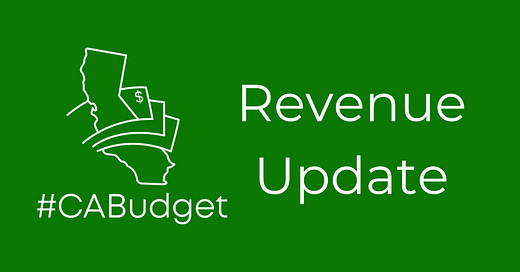Strong February for California income taxes
Provides temporary buffer against economic deterioration from recent federal actions
Strong February Income Tax Receipts. Preliminary information from California’s tax agencies show that personal and corporate income taxes, collectively, were a very surprising $1.3 billion (28.1%) above monthly projections in February. For the 2024-25 fiscal year to date, these income taxes are now $3.2 billion (3.5%) above projections released by the Newsom administration with the Governor’s January 10 budget proposal. (Projections were completed before the decision to delay key tax filing deadlines in Los Angeles County until October due to wildfires, making the February gains all the more surprising.)
Withholding Still Doing Well. Personal income tax (PIT) withholding was $887 million (11.3%) above monthly projections in February, and PIT refunds were $224 million (5.5%) below monthly projections. Corporation tax refunds were $330 million (52.1%) below monthly projections. These trends tend to increase monthly net receipts relative to projections. On the flip side of that, miscellaneous, final return, and estimated tax PIT payments were collectively about $68 million (7.6%) below the monthly projection.
Revenue Strength a Temporary Buffer Against Economic Challenges. The year-to-date income tax strength provides a perhaps temporary buffer against possible challenges due to the federal government’s recent discretionary decisions to damage the economy. U.S. stock prices rose substantially after the November election, but drops in recent days have, for now at least, eliminated almost all of those gains. Recession odds have been rising according to various measures. A trade war may noticeably increase consumer prices. These trends, if they continue, may reduce capital gains, bonus, and option income, increase joblessness, depress consumer confidence further, and reduce corporate profitability. That would increase California’s structural budget deficit, as would anticipated congressional actions to reduce funding for Medicaid and other programs, such as federally funded research. With a structural budget deficit and key temporary state revenue sources (cap and trade and Proposition 30 taxes) expiring in 2030, California has minimal capacity to backfill federal cuts to health care and other public programs.



